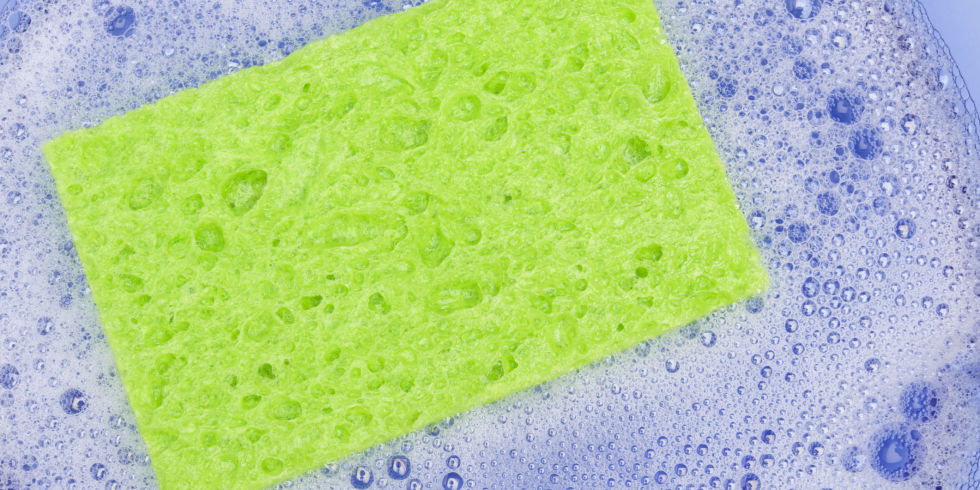No one likes the idea of cleaning dishes with a germy sponge, which is why we all know we should be cleaning ours on the regular. But which method is best? The Good Housekeeping Institute worked with EMSL Analytical testing lab in Westmont, New Jersey to find out if using the dishwasher, microwave, washing machine, bleach, or vinegar removed the most bacteria — and bleach won.
The Best Way to Clean a Sponge
Mix 3/4 cup of bleach in one gallon of water and soak the sponge for five minutes, then rinse – and that’s it. In testing, the bleach solution killed 99.9% of the three bacteria strains from the test sponges (scrub and regular cellulose), which is the benchmark based on the EPA’s requirement for sanitization of non-food-contact surfaces.
But no matter how diligent you are about cleaning, your kitchen sponges won’t last forever. Clean them weekly, and toss shabby ones every two to three weeks, depending on use.

3 Other Ways to Clean a Sponge
Even though bleach is the most effective bacteria killer, in a bind, these methods are your next best option. They’re listed in order from most to least effective, so choose wisely.
1. Microwave
The microwave was one of the next most effective, zapping 99.9% of germs. Do this by putting the sponge in the microwave, saturating it in water (we used 1/4 cup for scrub sponges and 1/2 cup for cellulose), then heating it on high for one minute (scrub) or two minutes (cellulose).
2. Dishwasher
The dishwasher also killed 99.9% of germs. To use, add your sponge to a regular dishwasher load, using the “heated dry” setting.
3. Vinegar
This method eliminated 99.6% of bacteria. All you have to do is soak your sponge in full-strength vinegar for five minutes, then rinse.












